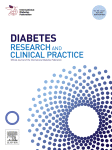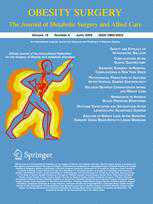Diabetes Res Clin Pr:T2DM患者存在骨矿代谢失衡
2013-06-05 Diabetes Res Clin Pr dxy
在2型糖尿病(T2DM)患者中,为了评估糖尿病和糖尿病肾病对骨矿代谢的影响。来自中国兰州大学第二医院的陈慧教授及其团队进行了一项研究(The effects of diabetes mellitus and diabetic nephropathy on bone and mineral metabolism in T2DM patients),该研究发现T2DM患者表现为骨矿代谢失衡,而且,合并
在2型糖尿病(T2DM)患者中,为了评估糖尿病和糖尿病肾病对骨矿代谢的影响。来自中国兰州大学第二医院的陈慧教授及其团队进行了一项研究(The effects of diabetes mellitus and diabetic nephropathy on bone and mineral metabolism in T2DM patients),该研究发现T2DM患者表现为骨矿代谢失衡,而且,合并肾病时倾向于加重骨矿代谢失衡。在T2DM患者中,血清骨钙蛋白和24小时羟脯氨酸可被认为是监测可能骨矿代谢紊乱的有用的生化指标。该研究结果在线发表在3月20日的《糖尿病研究与临床实践》(Diabetes research and clinical practice)杂志上,该杂志的影响因子为2.754。
该研究中,在30例T2DM患者(D组)、25例合并肾病的T2DM患者(DN组)和27例非糖尿病对照组受试者(C组)中评估和比较血清骨钙蛋白(BGP)、血清碱性磷酸酶(ALP)、骨特异性碱性磷酸酶(BAP)、24小时尿羟脯氨酸(HOP)、血和尿钙、磷水平、以及骨矿密度(BMD)。
该研究结果表明,与非糖尿病对照组相比,D组和DN组患者血清骨钙蛋白和骨矿密度降低,而血清碱性磷酸酶和尿羟脯氨酸增加。血清骨钙蛋白的降低与血清碱性磷酸酶不相关(r=-0.1,P<0.37)。在糖尿病组(D组和DN组)中,没有观察到骨特异性碱性磷酸酶显著改变,然而,DN组与D组相比,表现出更高水平的血清骨钙蛋白、更高水平的24小时尿羟脯氨酸、以及更低的骨矿密度。D组和DN组的尿钙均增加,且D组比DN组有更高水平的尿钙。在DN患者,循环磷酸盐增加和尿磷酸盐排泄减少,然而,在D组患者观察到循环磷酸盐减少和尿磷酸盐排泄增加。
该研究发现,T2DM患者表现为骨矿代谢失衡,而且,合并肾病时倾向于加重骨矿代谢失衡。在T2DM患者中,血清骨钙蛋白和24小时羟脯氨酸可被认为是监测可能骨矿代谢紊乱的有用的生化指标。

The effects of diabetes mellitus and diabetic nephropathy on bone and mineral metabolism in T2DM patients.
AIM
To assess the effects of both diabetes mellitus and diabetic nephropathy on bone mineral metabolism in patients with type 2 diabetes mellitus (T2DM).
METHODS
Serum osteocalcin (BGP), serum alkaline phosphatase (ALP), bone-specific alkaline phosphatase (BAP), 24-h urinary hydroxyproline (HOP), blood and urine calcium (Ca), phosphate (P) levels and bone mineral density (BMD) were assessed and compared in 30 patients with T2DM (group D), 25 T2DM patients with nephropathy (group DN) and 27 nondiabetic control subjects (group C).
RESULTS
Compared with the nondiabetic controls, patients in both groups D and DN had decreased serum osteocalcin (BGP) and bone mineral density (BMD) while serum alkaline phosphatase (ALP) and urinary hydroxyproline (HOP) were increased. Decrease in BGP was not correlated with ALP (r=-0.1, P<0.37). Within both diabetes groups (group D and group DN), no significant change in BAP is observed, however group DN showed higher level of BGP, higher level of HOP and lower BMD than group D. Urine calcium was increased in both group D and DN with group D having higher levels than group DN. In DN patients had increased circulating phosphate and decreased urinary excretion of phosphate, while decreased circulating phosphate and increased urinary excretion phosphate are seen in group D patients.
CONCLUSION
Patients with T2DM show an imbalance of bone mineral metabolism, and co-existence of nephropathy tends to aggravate this. Serum osteocalcin and 24-h hydroxyproline may be considered useful biochemical markers for monitoring possible bone mineral metabolism disorder in T2DM patients.
本网站所有内容来源注明为“梅斯医学”或“MedSci原创”的文字、图片和音视频资料,版权均属于梅斯医学所有。非经授权,任何媒体、网站或个人不得转载,授权转载时须注明来源为“梅斯医学”。其它来源的文章系转载文章,或“梅斯号”自媒体发布的文章,仅系出于传递更多信息之目的,本站仅负责审核内容合规,其内容不代表本站立场,本站不负责内容的准确性和版权。如果存在侵权、或不希望被转载的媒体或个人可与我们联系,我们将立即进行删除处理。
在此留言










#T2DM患者#
42
#骨矿代谢#
35
#Diabetes#
36
#DIA#
32
#BET#
43